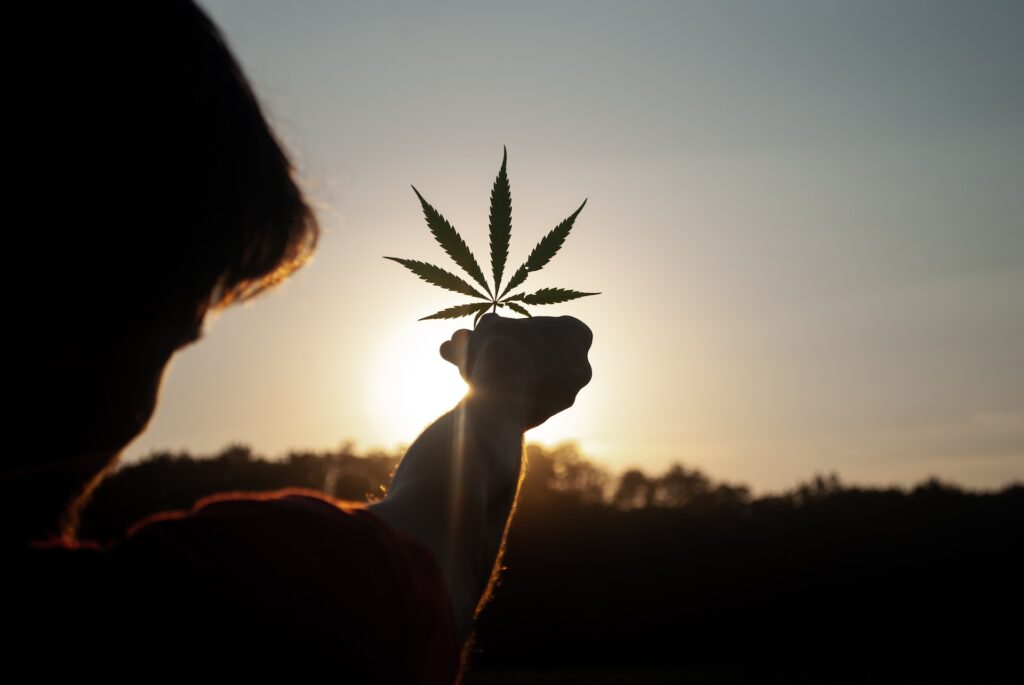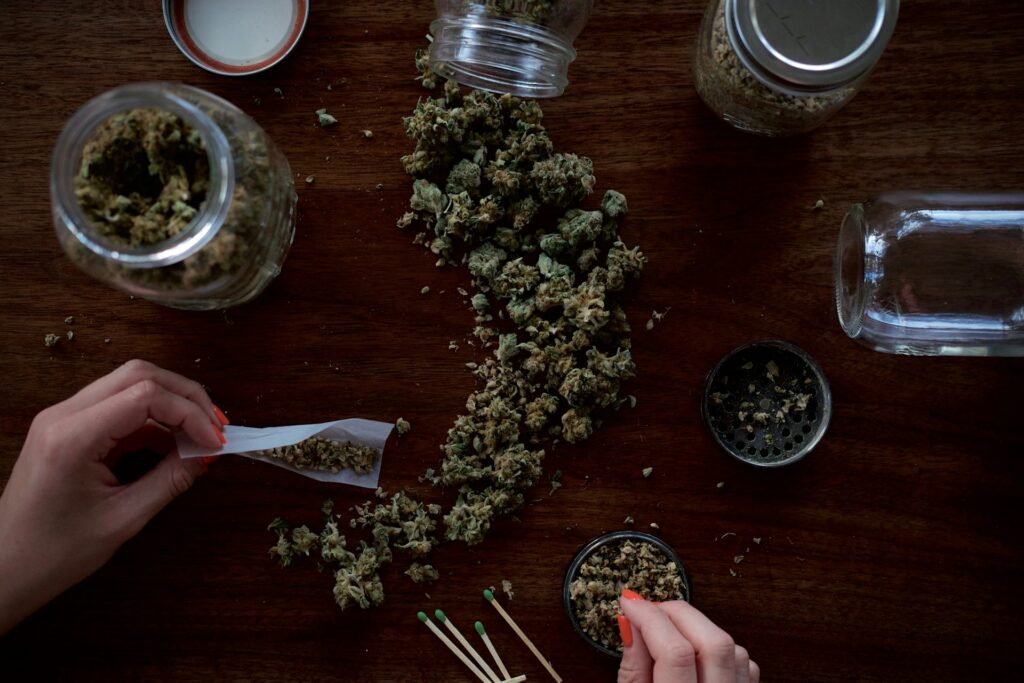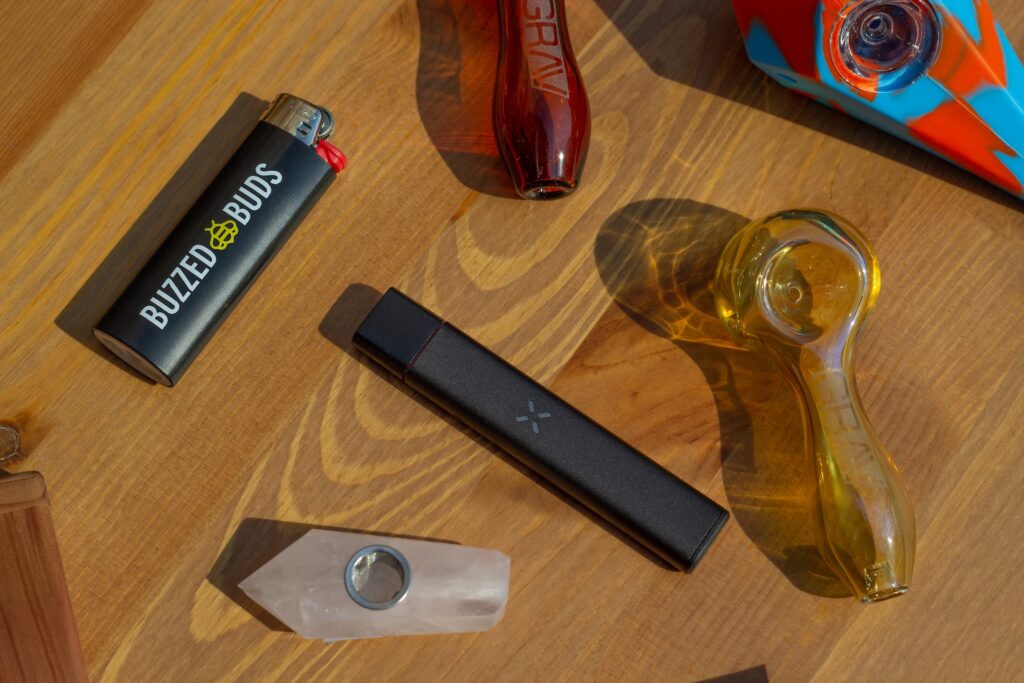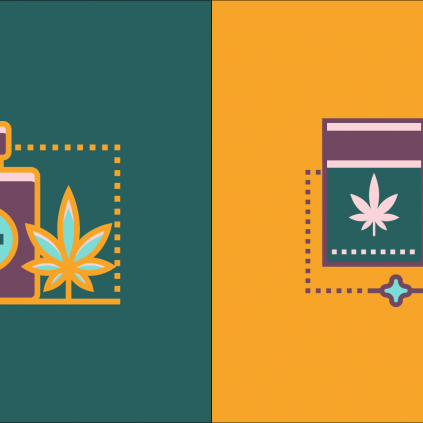
The popularity of the versatile plant we know as marijuana continues to rise, and its legal status has evolved. Now that it’s widely available, more and more people are exploring different ways to enjoy this magical plant. Two of the most popular methods of weed consumption are smoking and vaporizing.
Whether you’re a newcomer to the green world or an old-school user, understanding their differences can be a bit confusing. In fact, an emerging debate is growing within the marijuana community as to which of these two methods is best.
To clear up any confusion, let’s dive into the comparison between smoking and vaporizing marijuana.
Understanding the basics of smoking and vaporizing
You may have noticed how e-cigarettes revolutionized the world of nicotine consumption. It made it easier for people to switch from traditional cigarettes or quit them altogether. Similarly, vaporizing is changing how we consume weed, offering an alternative to the classic smoking experience.
Both smoking and vaporizing have their unique characteristics and effects on the body. Understanding these differences is how you’ll be able to choose what’s right for you.
Smoking
Smoking has been the traditional method of consuming marijuana for centuries. Much like smoking anything else, it involves the combustion of the weed, which produces smoke that is then inhaled. There are various ways to smoke cannabis, such as rolling it into joints or blunts. You can also use a bong or pack it into a pipe.
One of the reasons smoking remains popular is its simplicity and familiarity. Smokers tend to enjoy the “vibe” of this consumption method because of anything from the depiction in pop culture to nostalgic memories of their first time.
Vaporizing
Vaporizing, on the other hand, is a more modern method of consuming weed that has gained significant popularity in recent years. Instead of burning the plant material, vaporizers heat it to a precise temperature, just below its combustion point. This process releases the active compounds in the form of vapor, which the user then inhales.
Think of it as cooking a chicken. When you overheat it and it burns, smoke billows out, probably triggering that annoying smoke detector. But if you cook it just right, the dish still heats up, and instead of smoke, the air fills with delicious and pleasant smells. This is the same concept when it comes to vaping weed. You are not burning the plant matter but still releasing its active compounds in a convenient inhalable form.
In order to vape cannabis, you’ll need a device called a vaporizer. These devices are available in different shapes and sizes, which we’ll discuss later.
The effects of smoking and vaporizing on the body
As far as consumption goes, smoking and vaporizing are among the most similar. Unlike tinctures, edibles, or creams, these methods involve the same Route of Administration (ROA) to your body: Inhaling. Both methods allow for the absorption of THC and other cannabinoids through the lungs.
When inhaled, these compounds quickly enter the bloodstream and reach the brain, producing the desired effects. However, how these methods impact our respiratory system and overall health is quite different.
Respiratory effects
When smoking cannabis, the combustion process produces a complex mixture of gaseous and solid particles. Some of which can have harmful effects on our respiratory system. In contrast, vaporizing eliminates many of these harmful by-products, as the weed is only heated and not burned.
As a result, vaporizing is generally considered a healthier alternative to smoking, exposing the lungs to fewer irritants and toxins. It’s important to note, though, that the long-term health effects of vaporizing are still not fully understood. It’s best to exercise caution and moderation when consuming cannabis in any form.
In addition to the respiratory effects, smoking and vaporizing can also have different impacts on other aspects of our body. Some people report throat irritation, and head rushes, but this also depends on the strain being smoked.

The potency of vaporizing vs. smoking
When it comes to getting the most out of your cannabis, the method you choose can play a significant role in determining the potency and overall experience.
THC and CBD concentrations
One major difference between smoking and vaporizing is their bioavailability, which refers to the proportion of active compounds absorbed into the bloodstream. Expert insights have shown that vaporizing is more efficient than smoking in delivering THC and CBD.
That’s mainly because fewer compounds are lost to combustion and sidestream smoke. So, you would think vaporizing automatically leads to a more potent high. Well, not necessarily.
Onset and duration of effects
Both smoking and vaporizing provide a rapid onset of effects. The cannabinoids are quickly absorbed through the lungs and into the bloodstream. However, the feeling you get differs quite drastically. Some users find that vaporizing provides a smoother and more comfortable experience. In other words, a “clean high.”
Others may prefer the more intense sensations associated with smoking. There may be an added head rush and a longer duration of effects.
Flavor and aroma
When it comes to taste and smell, cannabis connoisseurs are very particular. That being said, vaporizing usually provides a much better flavor and aroma than smoking. Since the herb isn’t combusted, you can truly taste its unique terpene profile. Terpenes are compounds responsible for the aroma and flavor of cannabis.
Conversely, smoking can produce a more harsh and burnt taste, as the high temperatures destroy many of the terpenes and produce a less nuanced flavor profile.
Pros and cons of vaporizing vs. smoking
Now that we’ve covered the basics of smoking and vaporizing let’s take a closer look at the advantages and disadvantages of each method. This will help you decide which is best for your lifestyle and preferences.
Advantages of smoking
- Simplicity: For many people, smoking is a tried-and-true method that they know and love. It’s easy to learn and requires little to no additional equipment, making it a convenient option for those looking to enjoy cannabis without any fuss.
- Social aspect and tradition: Smoking has a long history and cultural significance, and many users enjoy the social rituals of passing around a joint or sharing a bowl with friends.
- Low maintenance: Smoking generally requires less upkeep than vaporizing, as there are fewer parts to clean and no batteries to charge. A grinder, some papers, and a lighter are usually all you need.
Disadvantages of smoking
- Health risks: As mentioned earlier, the combustion process involved in smoking produces harmful by-products that can negatively affect lung health and overall well-being.
- Strong odor and lingering smell: Smoking cannabis produces a distinct and often pungent odor that can cling to clothes, hair, and furniture, making it less discreet than vaporizing.
- Loss of flavors: The high temperatures involved in smoking can destroy many of the terpenes responsible for the unique flavors and aromas of cannabis, resulting in a less enjoyable taste experience.
- Wasteful: Due to the lower efficiency of smoking in comparison to vaporizing, more cannabis is needed to achieve the same desired effects, which can be more costly in the long run.
Advantages of vaporizing
- Healthier alternative: Vaporizing is generally considered a healthier option due to the reduced exposure to harmful by-products and toxins.
- Temperature control: Many vaporizers allow users to adjust the temperature settings, allowing for a more personalized and controlled experience.
- Better flavor: The lower temperatures in vaporizing preserve the terpenes, leading to a more enjoyable and nuanced taste experience.
- Discreet: Vaporizing produces less odor and visible vapor than smoking, making it a more discreet option for those seeking to consume cannabis without drawing too much attention.
- No external heat source needed: Unlike smoking, which requires a lighter or matches, vaporizers use batteries or electrical power to heat the cannabis. This eliminates the need to find an open flame.
Disadvantages of vaporizing
- Different high: Some users may find the high from vaporizing to be less intense or different from what they are used to when smoking. This can be a matter of personal preference, and it’s important to experiment with different methods to find what works best for you.
- The initial cost of vaporizers: Vaporizers can be more expensive upfront than smoking materials. However, the increased efficiency and reduced health risks may make it a worthwhile investment in the long run.
- Learning curve and maintenance: Vaporizers can be more complex than smoking, especially for beginners. Additionally, vaporizers often require regular cleaning and maintenance to ensure optimal performance.
- Charging: Unlike smoking, vaporizers rely on batteries or electrical power, so they must be charged regularly. This can be a downside for those who want to consume cannabis on the go without access to a power source.
Choosing the right vaporizer for your needs

If you decide that vaporizing is the right method for you, you must choose the right vaporizer for the best experience. Here are some factors to consider when selecting a vaporizer:
Types of vaporizers
- Desktop vaporizers: Desktop vaporizers are larger and more powerful, offering a high-quality experience for home use. For example, the Volcano vaporizer uses a powerful heating element that can reach temperatures of up to 400°F.
- Portable vaporizers: These are smaller and typically battery-powered, so they can be used on the go. Examples include the PAX 3 and Firefly 2 vaporizers, which offer precise temperature control and easy portability.
- Vape pens: The most straightforward and discreet option, vape pens use pre-filled cartridges that attach to the device. These are often used for CBD or THC oils rather than flowers.
- Compatibility: Some vaporizers are designed specifically for dry herbs, while others work with oils or concentrates. There are also multi-use vaporizers that can handle different types of cannabis products. Consider your preferred method of consumption when selecting a vaporizer.
Factors to consider
- Budget: Vaporizers come in a wide range of prices, from affordable entry-level options to high-end luxury devices. Determine how much you’re willing to spend and look for a vaporizer that offers the best performance within your budget.
- Personal preferences and lifestyle: Consider how you plan to use your vaporizer and what features are most important to you. If you value portability and discretion, a compact and sleek device may be the perfect choice. If you’re a flavor enthusiast, look for a vaporizer with precise temperature control to preserve those terpenes.
- Ease of use and maintenance: Some vaporizers are more user-friendly than others, with straightforward controls and minimal upkeep. If you’re new to vaporizing or simply want a hassle-free experience, prioritizing ease of use would be one of the more informed decisions.
Conclusion
In conclusion, both smoking and vaporizing weed offer unique experiences and come with their own set of pros and cons. Ultimately, the goal is to enjoy a satisfying cannabis session that enhances your well-being and brings you closer to the amazing world of marijuana.
So, whether you smoke or vape, here’s to exploring new heights and discovering the perfect way to consume your favorite plant!



